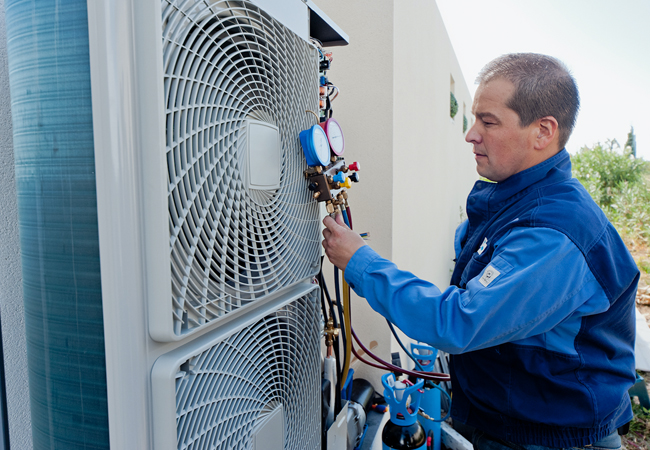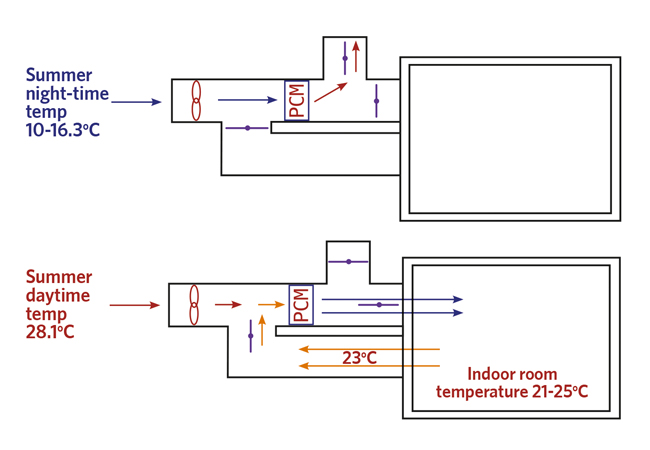
In response to the F-gas Regulation, the HVAC industry has already started adopting lower-GWP refrigerant alternatives for air conditioning, heat pumps and refrigeration. However, there is no single low-GWP refrigerant suitable for every application. As a result, refrigerant producers will continue to manufacture and supply a diverse range of gases including R32, R410A, HFO blends, CO2 and hydrocarbons, such as R290 (Propane) and R600 (Butane).
The optimal refrigerant depends on the application type, required capacity and temperature range. Therefore, selection should be made based upon four key factors: safety, environmental impact, energy efficiency and cost-effectiveness.
Safety
A refrigerant must be safe to use through the entire lifecycle of the equipment, including transport, storage, installation, use, servicing, recovery and recycling. A thorough risk assessment should be carried out for any application, as some refrigerants may be acceptably safe for one type of equipment but not for others. And, while non-flammable and low-toxicity refrigerants may have safety benefits, they may not be ideal from an environmental point of view.
Environmental impact
Clearly, in light of the F-gas Regulation, a key consideration when choosing a refrigerant is its effect on the environment. The environmental impact of a system is evaluated by its carbon dioxide tonne equivalent (CO2e), calculated by multiplying the system charge in tonnes by the GWP of the refrigerant used. For example a 10kg (0.01t) system charge of R410A (2,088 GWP) has a 20.88t CO2 equivalent.
The environmental impact assessment should also consider the refrigerant’s heat transfer capacity and heat exchange efficiency, as these can dictate the volume needed.
More efficient gases such as R32, for example, require less refrigerant to deliver the same performance as units operating on higher-GWP refrigerant. How the refrigerant is managed through its lifecycle – including production, leak prevention and recovery, reclamation and destruction – is also important.
Energy efficiency
Energy efficiency assessments should not only consider a system’s ability to provide effective cooling and heating for a wide range of exterior temperatures but also its Total Equivalent Warming Impact.
TEWI is used to evaluate the best refrigerant to use for particular applications. It measures the impact of the global warming of a refrigerant during its lifetime versus its indirect emissions in terms of CO2 produced whilst a system is running by looking at its efficiency.
While some gasses seem to offer a low GWP they may not be as efficient as others and the trade-off becomes clear by using this calculation.
Cost-effectiveness
Customers want to have affordable solutions for their homes and businesses. Cost effectiveness needs to consider the availability of the refrigerant; the cost of installing and maintaining equipment; the size of the equipment; and whether the refrigerant choice contributes to reducing overall system operation and maintenance costs.
Finally, with refrigerant costs rising, it is worth considering how easy it is to recover and recycle the refrigerant once the equipment reaches the end of its life.
R32: a good choice but not the only choice
R32 has emerged as the front-runner for comfort cooling applications, based on these four criteria. First, it is a very similar gas to R410A, with 50% of R410A being R32, and, along with its lower GWP (675 compared to 2,088), R32 is 10% more efficient than R410A and has a higher ‘volumetric efficiency’, so smaller units deliver the same capacity with less refrigerant.
However, while R32 is already being adopted in smaller split systems – Daikin, for example, was the first manufacturer to introduce an R32 system in 2015 and has sold 10 million of the estimated 17 million units in operation globally – there is no one-size-fits-all refrigerant for every application.
While R32 VRF/VRV systems are being developed – Daikin has already launched a high-capacity R32 VRV in Japan, earlier this year – units available for every application will still take some time. This is because there is a need to develop new compressors and heat exchangers that are optimised for R32 to ensure efficiency is improved and charge volumes are reduced.
Until these alternatives are widely available, R410A VRF/VRV systems are still a practical choice: safe, efficient and cost-effective, they currently represent the best way of minimising environmental impact. There is no doubt that refrigerant producers and system manufacturers will continue to support both new and existing installations for the lifetimes of those systems.




